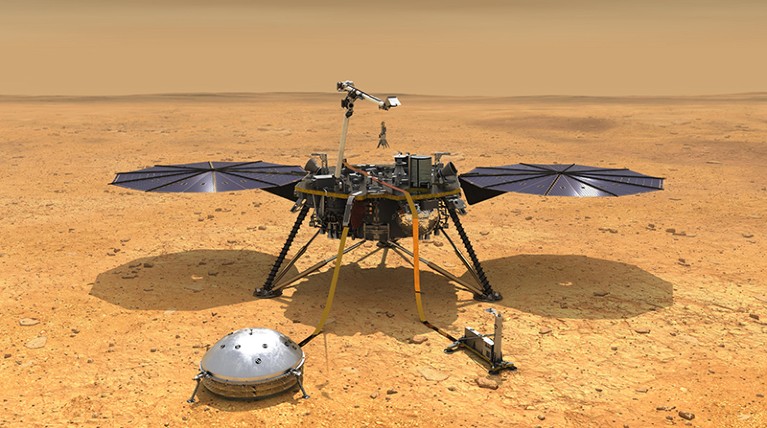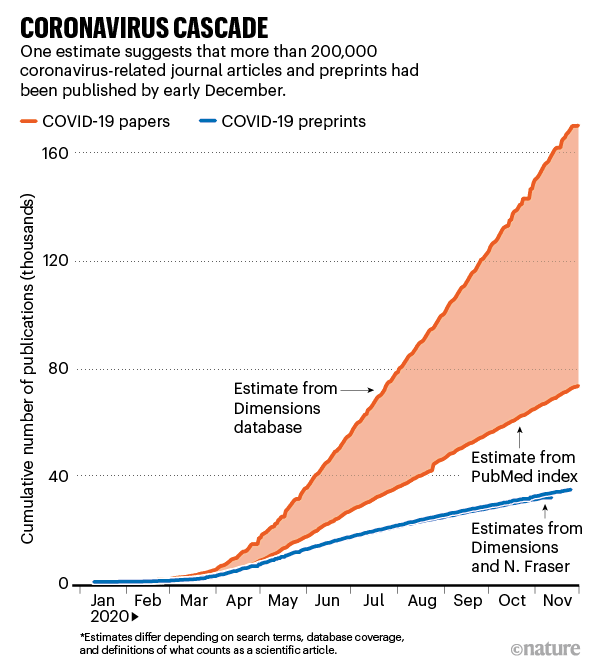Hello Nature readers, would you like to get this Briefing in your inbox free every day? Sign up here

The Mars InSight lander is equipped with a domed seismometer (left) and a probe for measuring heat flow (right).Credit: NASA/JPL-Caltech
Mars is a layer cake
NASA’s InSight mission has finally peered inside Mars, marking the first time scientists have directly probed the inside of a planet other than Earth. Seismologists are using marsquakes to map the red planet’s interior, measuring differences in how seismic waves move through its structure to determine the make-up of the planet’s geological layers. The new data show that Mars’s crust is made up of either two or three layers. In the coming months, scientists will report on measurements taken even deeper, ultimately revealing information about the planet’s core and mantle.
Monarch butterflies ‘cost too much to save’
Monarch butterflies (Danaus plexippus) will not benefit from being listed as an endangered species under US law because officials say they lack the money to protect them. Monarch numbers have crashed because of the impact of pesticides and climate change on their food source: milkweed plants. “We have to work within the funding resources that we have,” said Lori Nordstrom, assistant regional director for ecological services for the US Fish and Wildlife Service’s midwest region. Conservationists laud the success of grant programmes that pay farmers to maintain pollinator habitat and urge citizens to plant milkweed themselves.
The New York Times | 5 min read
Baboon points to the enigmatic Land of Punt
Archaeologists might have found the first hard evidence of a mysterious land called Punt where ancient Egyptians traded for precious metals and exotic animals. A mummified baboon (Papio hamadryas), taken from an ancient Egyptian temple and currently residing in the British Museum, seems to be the first known traveller from this antique land. The distinctive ratio of strontium isotopes in the baboon’s teeth show that it was born in an area that encompasses much of present-day Ethiopia, Eritrea and Djibouti, and portions of Somalia and Yemen — just where most archaeologists think Punt was located.
Features & opinion
Ten remarkable discoveries of 2020
From mapping a protein’s atoms to charting a source of radio waves in the Milky Way, researchers overcame the pandemic in 2020 to reveal wonders at every scale. Go deep into some of the years’ most notable discoveries in our pick of Nature News & Views articles. Among them: jet-stream changes resulting from a global ban on ozone-depleting pollutants, and tiny alterations in a protein that help to make fruit flies into picky eaters.
Read the manuals
After his laboratory shut down, bioengineer Shubham Tanwar turned to his reading list to banish ‘why doesn’t my experiment work’ frustration. “I started reading the online manuals for various pieces of lab equipment I was planning to use,” says Tanwar, who offers his tips for organizing the information gleaned. It doesn’t make up for being locked out of the lab, he says, but it did help him feel more confident around the equipment and less anxious about breaking it.

